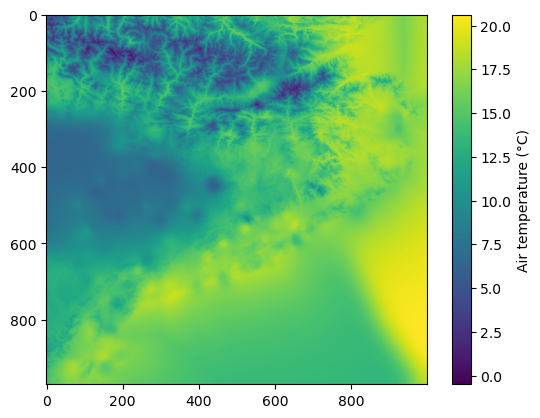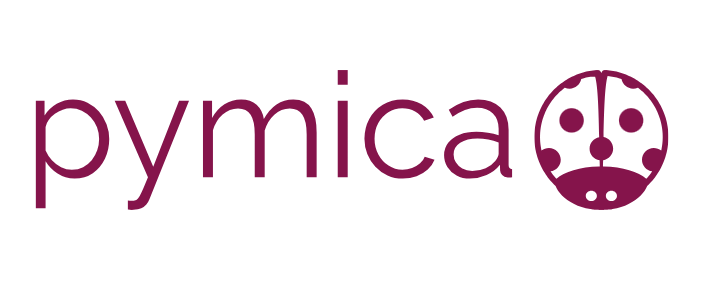08. Interpolation - Multiple Linear Regression (+ Residual Correction) with Clusters#
In this tutorial, we will cover the interpolation of point data using
the Multiple Linear Regression (MLR) methodology, along with applying
residual correction. This is available in PyMica as mlr+id2d and
mlr+id3d, depending on the residual correction interpolation method.
We’ll use clustered data and regressions for this approach. The process
requires location information (lon and lat), predictor variables
such as altitude (altitude), or distance to the coastline (among
others), and the value to interpolate. If you choose mlr+id3d,
altitude must be provided in the variables_files. Additionally,
it requires ESRI Shapefile clusters and the corresponding rasterized
fields.
We will use sample data from the Meteorological Service of Catalonia to illustrate how to apply these interpolation techniques. To get started, we need to import the necessary modules and load the observation data, as well as the PyMica class.
import json
from pymica.pymica import PyMica
Interpolation mlr+id2d with clusters#
Let’s call the PyMica class with the appropriate parameters, setting the
methodology to mlr+id2d and the configuration dictionary as follows:
config_file = 'sample-data/configuration_sample.json'
with open('sample-data/configuration_sample.json', 'r') as f_p:
config = json.load(f_p)
config['mlr+id2d']
{'id_power': 2.5,
'id_smoothing': 0.0,
'clusters': 'None',
'variables_files': {'altitude': 'sample-data/explanatory/cat_dem_25831.tif',
'dist': 'sample-data/explanatory/cat_distance_coast.tif'},
'interpolation_bounds': [260000, 4488100, 530000, 4750000],
'resolution': 270,
'EPSG': 25831}
where:
id_power: rate at which the influence of distant data points diminishes as we move away from them.id_smoothing: if 0.0 the interpolated value at that point location becomes identical to the observation value recorded at that precise data point.clusters: we will modify this parameter to apply interpolation with clusters.variables_files: dictionary with predictor variables as keys and their corresponding GeoTIFF path as values. Here, altitude asaltitudeand distance to coast line asdist.interpolation_bounds: [minimum_x_coordinate, minimum_y_coordinate, maximum_x_coordinate, maximum_y_coordinate], it must be the same as the variable files.resolution: spatial resolution.EPSG: EPSG projection code.
If you want to incorporate clusters into the interpolation process, you
should define the "clusters" key as a dictionary with
"clusters_files" and "mask_files" as its keys. Both keys should
contain a list of file paths:
"clusters": {
"clusters_files": ["../sample-data/clusters_3.shp"],
"mask_files": ["../sample-data/rasterized_clusters_3"]
}
Let’s modify the configuration dictionary and save it to a new configuration file.
config['mlr+id2d']['clusters'] = {
"clusters_files": ["sample-data/clusters/clusters_6.shp"],
"mask_files": ["sample-data/clusters/rasterized_clusters_6"]
}
with open('sample-data/configuration_clusters_sample.json', 'w') as fp:
json.dump(config, fp)
cluster_config_file = 'sample-data/configuration_clusters_sample.json'
With all these parameters and configurations set, let’s initialize the
PyMica class with the methodology set to ‘mlr+id2d’.
mlr_id2d_clusters_method = PyMica(methodology='mlr+id2d', config=cluster_config_file)
Now that we have the interpolator set, we can input some data for interpolation. We will use data from the Meteorological Service of Catalonia AWS network.
with open('sample-data/data/smc_data.json', 'r') as f_p:
data = json.load(f_p)
data[0]
{'id': 'C6',
'value': 8.8,
'lon': 0.9517200000000001,
'lat': 41.6566,
'altitude': 264.0,
'dist': 0.8587308027349195}
As we can see, the first element of the data meets the requirements of
PyMica input data and has the same predictor variables as the ones
provided in the configuration dictionary. Therefore, we only need to
call the interpolate method from the mlr_id2d_clusters_method
interpolator class.
data_field = mlr_id2d_clusters_method.interpolate(data)
Now, we can get a quick look of the data_field array using
matplotlib.
import matplotlib.pyplot as plt
plt.imshow(data_field)
plt.colorbar(label='Air temperature (\u00b0C)')

Finally, we can save the result into a GeoTIFF file using
save_file() from PyMica class.
mlr_id2d_clusters_method.save_file("sample-data/results/mlr_id2d_clusters.tif")
We have now completed this tutorial on interpolating station data using
the mlr+id2d methodology with clusters. You can experiment by
changing the cluster files to observe how different cluster numbers
impact the interpolation results. If you wish to use mlr+id3d, the
process would be similar.
